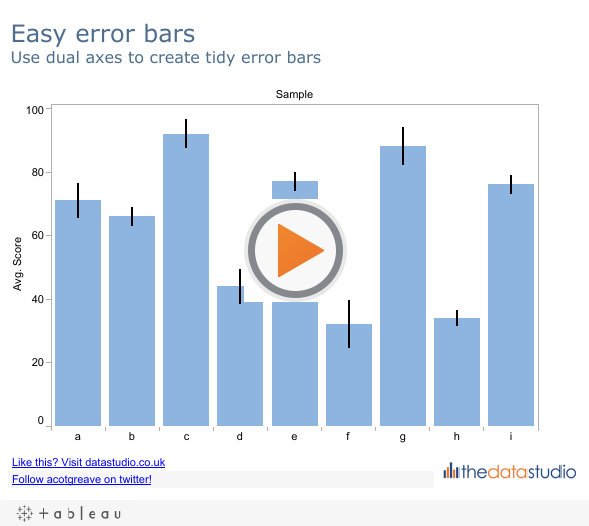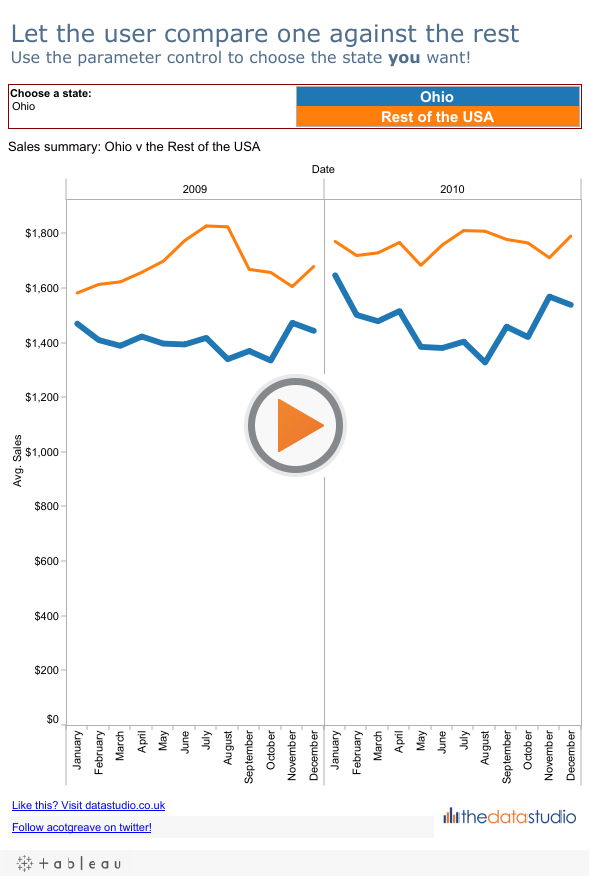Unlike any other tool I’ve used before, Tableau invites exploration. One can start with a blank canvas and end up who knows where. That’s what makes Tableau fun to use. However strange that word looks when used in a work context, it’s true.
I had a challenge. I needed to produce a handout that compared survey data on two suppliers. We had twenty questions that were asked across 17 different functional areas by a bunch of people. That’s a lot of info.
Back in the old days, I’d have ended up with a gloriously dull pivot table made in Excel. It would have either summarised the data to death, ending up with a one page table that aggregated away any meaning. Or maybe I’d have produced pages and pages of charts that showed the trees but not the forest.
Instead, I connect the data to Tableau and go on a trip.The end results is the trellis above (click it to see the full size version). So why did this particular chart get me excited enough to write a post about it?
Was it because 2,194 marks are being displayed on one page? Partly.
Was it because every single question and answer can be viewed on one page? Sure.
Was it because you can look down a whole row or across a whole column and see exactly where one supplier outperformed another? Kinda.
Was it because it is very quickly clear that the supplier with the black line largely outperforms the grey supplier? Definitely.
Or was it because my client took one look at it and almost fell over because it was exactly what they wanted? For sure.
Actually, the main reason was more than just the above. It was the fact that when I connected to the data, I had no idea what my end result was going to be. I knew it was going to printed out, so had to find a way to keep the page count down. How did I design the trellis? I didn’t – I just had an inkling of what might work, dropped Dimensions and Measures around as seemed relevant, and the end result emerged almost on its own.
And that’s why Tableau works: you don’t need to know where you’re going, just set off and you’ll end up somewhere pretty damn cool.





5 Comments
Add Yours →This is the essence of what I refer to type 3 discovery – discovering insight from the data that you didn’t know….you needed to know.
Love this andy, for me this is totally the opposite of excel and most other viz tools. They all require that you knew what you were looking for, and how you wanted to present it, before you start. Making this type of view impossible.
I’m wondering if you could do more with the colour though. In order to show who is ‘winning’. Perhaos if you could highlight wins by supplier one in blue, and wins by supplier two in orange, the most frequently appearing colour would suggest the overall winner.
Cheers
Tom
Needs more 3D.
Andy, well put !
@Tom – we did produce a heatmap as well, using colour to show the average response score. this, too, was instrumental in our final decision – the impact was immediately obvious. The example here did not use colour because of my brief: it had to be printed out, and I can’t rely on users having access to colour printers.
@Alex – you clearly read my earlier post!
@Dan – yes, I agree. Data discovery is, well, fun with Tableau. It’s almost embarrassing to use that word in terms of analytics tools, but once you have a tool that enables it, playing around with data is a fantastic way to get paid!